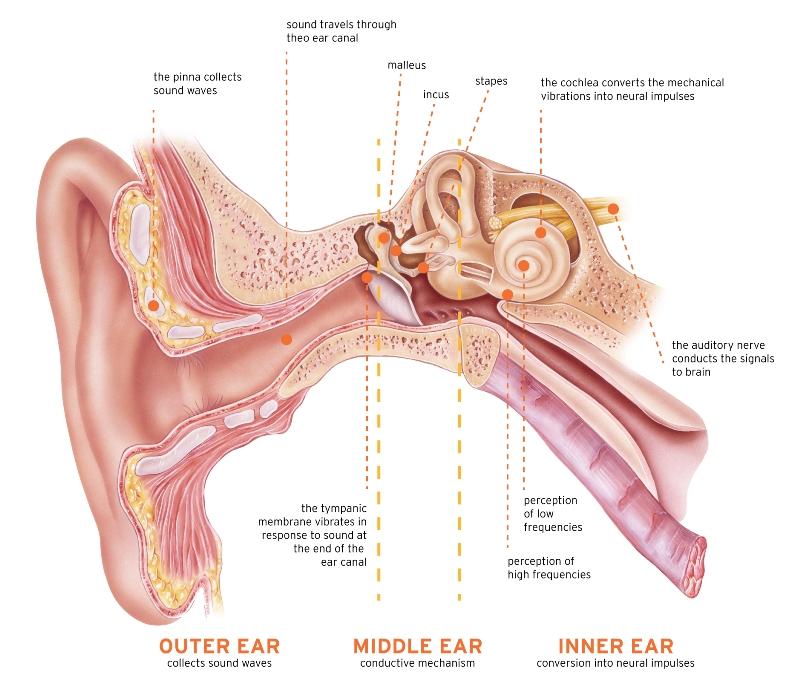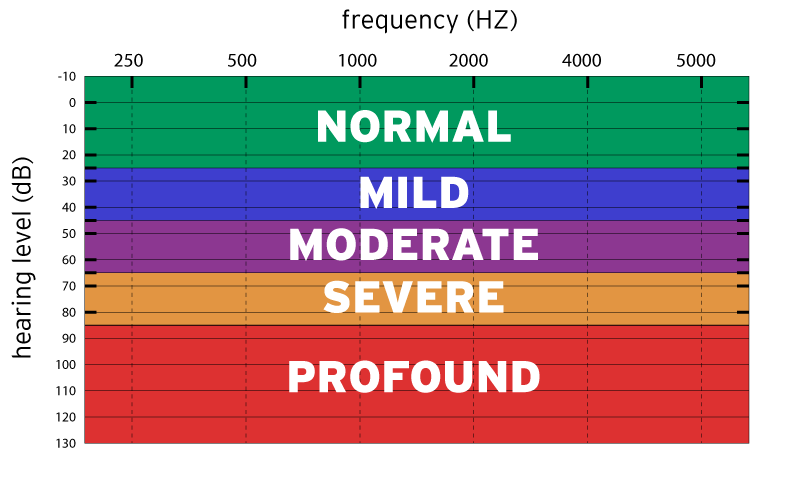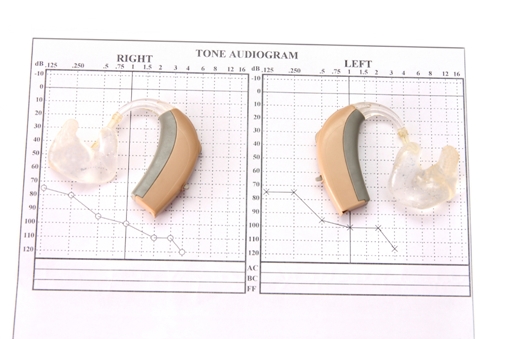HOW THE EAR WORKS

To better understand hearing loss, first it’s important to know how the ear works. The ear is divided in three parts: outer, middle and inner ear.
The outer ear collects and sends the sound through the ear canal to the eardrum, that vibrates according to the sound waves received.
The middle ear comprises the eardrum (tympanic membrane) and three small bones: hammer, anvil, and stirrup. These ossicles vibrate together with the eardrum, amplifying the sound and relaying it to the inner ear.
Finally, the inner ear (also called cochlea) contains a fluid that receives the vibrations from the ossicles and therefore moves its hair cells. These hair cells, therefore, send electrical impulses to the auditory nerve that transmit them to the brain, which can interpret them as sounds.
HEARING LOSS: WHAT IS IT?
Hearing loss is a health problem that affects thousands of people in the world and may be caused by several causes: genetics, noise exposure, ageing, diseases and traumas.
A hearing impaired person is someone with some degree of diminished sensitivity to sound. On the other hand, a deaf person is someone that can’t understand speech even in the presence of amplification.
Therefore, in most cases it’s possible to minimize the effects of hearing loss by using analogue or digital hearing aids.
The diagnosis must be done by a certified professional (otolaryngologist or audiologist) and by an audiological evaluation.

TYPES OF HEARING LOSS
Conductive Hearing Loss
Conductive hearing loss is any type of problem or injury in the outer or middle ears, preventing the sound waves to reach out the inner ear. The conductive hearing losses are usually mild or moderate and can also be temporary in may cases.
The conductive hearing losses are not necessarily permanent, they can be reversible by using medicines, surgeries and hearing aids.
Sensorineural Hearing Loss
Sensorineural hearing loss is a problem or injury in the inner ear or in the auditory nerve. They can be classified as mild, moderate, severe or profound.
The sensorineural hearing loss is permanent but hearing aids can most times help a lot. This type of hearing loss is also known as cochlear and retrocochlear.
Mixed Hearing Loss
The mixed hearing loss is a combination of the conductive and sensorineural hearing losses.
Mixed hearing losses can be treated by surgery or with a hearing aid.
SYMPTONS
– Everyone says that your TV sound is too loud;
– You feel that your friends mumble when they speak;
– When someone speaks low or whispers, you find it hard to understand;
– In a party or somewhere with a lot of noise, you find it difficult to hear what people are talking about;
– Sometimes you don’t answer the phone or the doorbell because you didn’t hear them;
– A lot of times people say that you seem like shouting when you speak or that you speak too loudly;
– It’s common that you ask people to repeat what they have just said;
– Friends and family have already implied that you have a hearing loss;
– You don’t listen to the birds singing, dripping faucet or the clock tic-tac;
– You feel hard to understand the lyrics of a music when you listen to the radio.
CAUSES
– Listening to loud noises, especially with earphones;
– Heredity (genetics);
– Ageing: one out of three people between 65 and 74 years old has some degree of hearing loss. Above 75 years old, this proportion increases to one out of two people;
– Working in excessive noise places, like factories, airports etc.
– Infections caused by diseases such as meningitis, measles, mumps and scarlet fever;
– Adverse reactions to medicines: some antibiotics and other drugs can affect the eardrum functioning if incorrectly taken;
– Inadequate pre-natal care, mainly in developing countries;
– Ear wax or external objects that block the ear canal.
AUDIOGRAM: WHAT IS IT?

Audiogram is a graphic result of an audiometer exam, in which are tested the hearing thresholds of a person.
The horizontal axis in the graph (upper part) shows the sound frequency, that varies from bass to treble sounds. In turn, the vertical axis (left) shows the variation of sound intensity, which is measured in decibels (dB). The bigger it gets, the higher is the sound volume, as it’s the case of airplanes, trucks moving etc.

Audiogram Example
